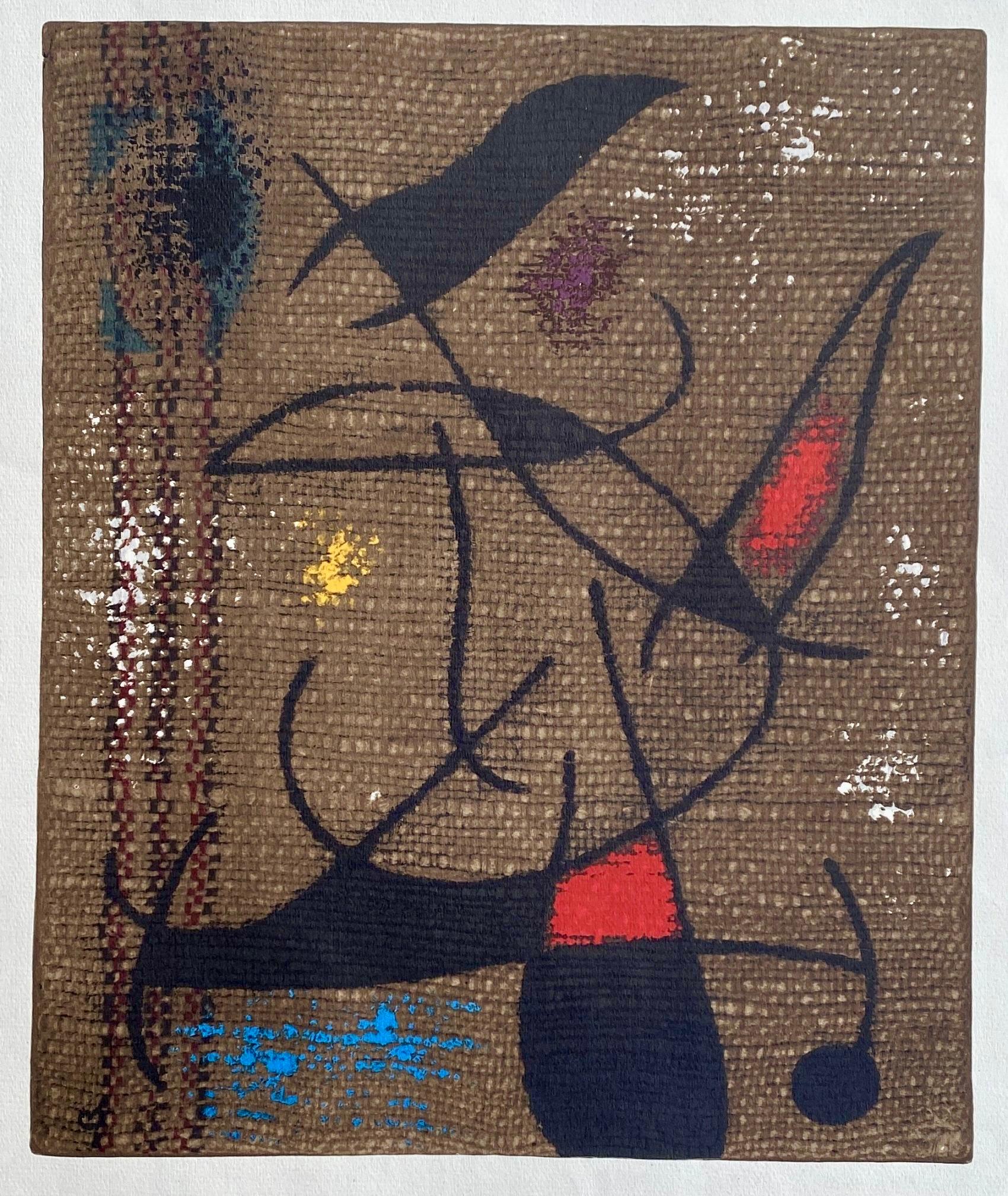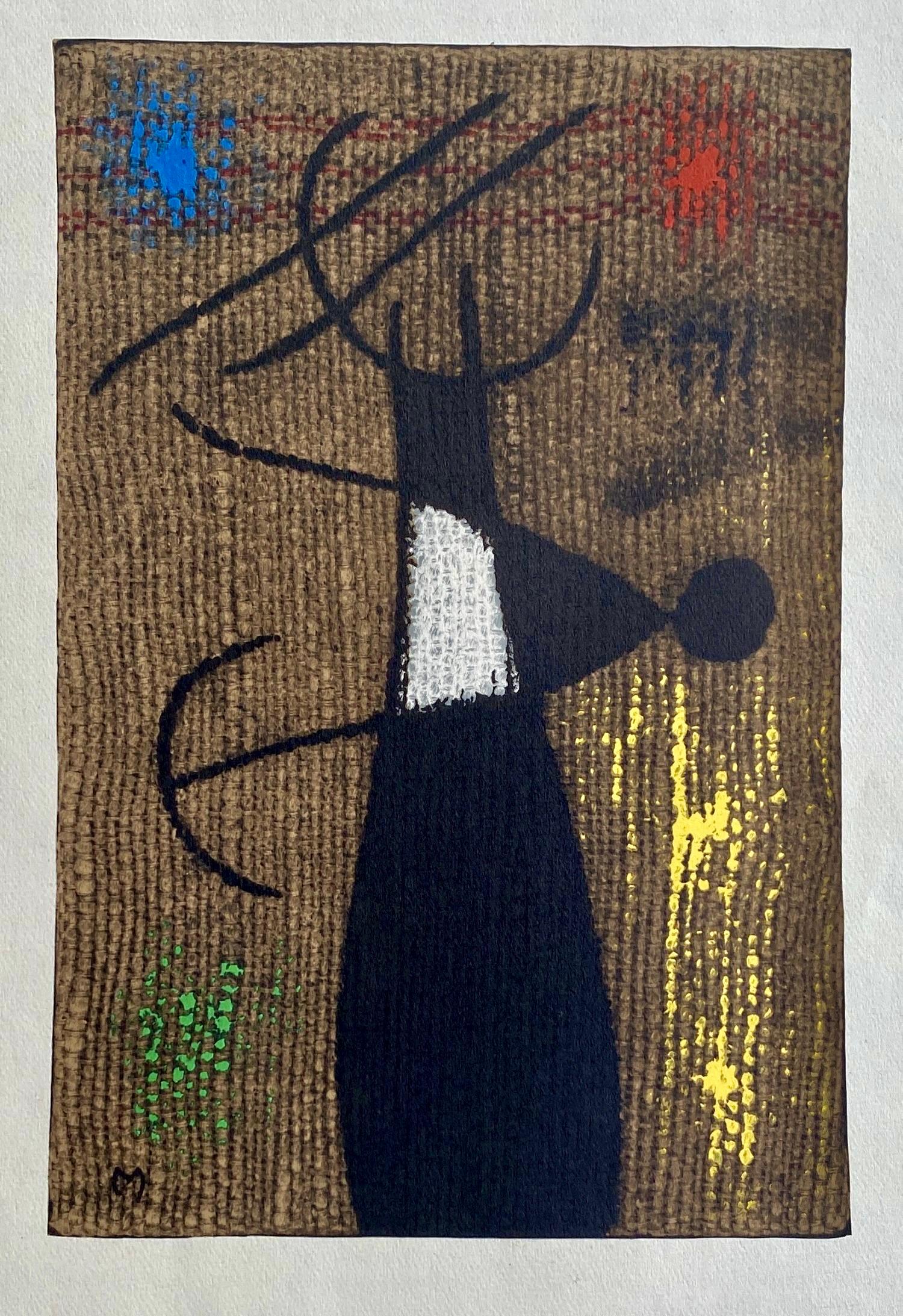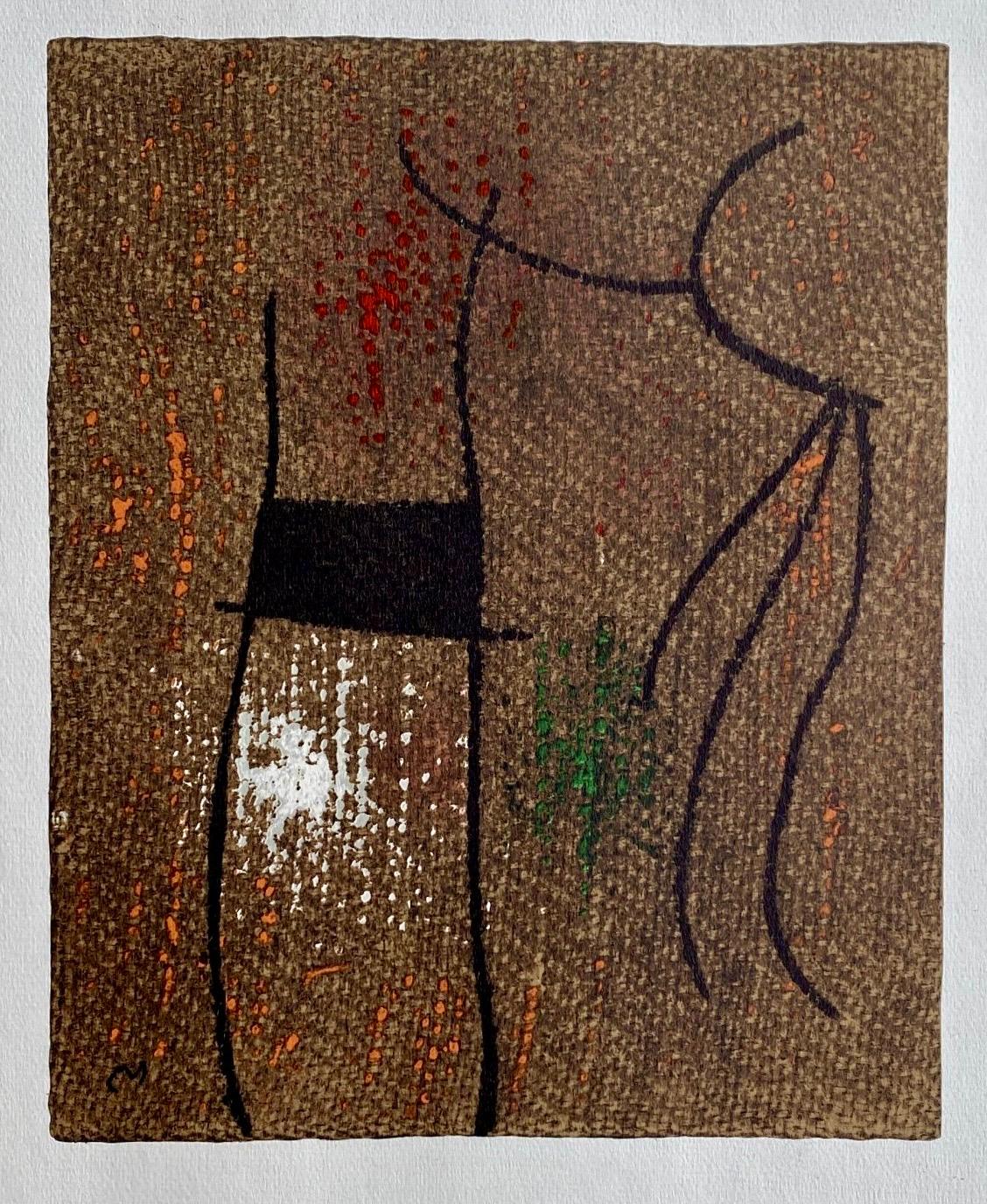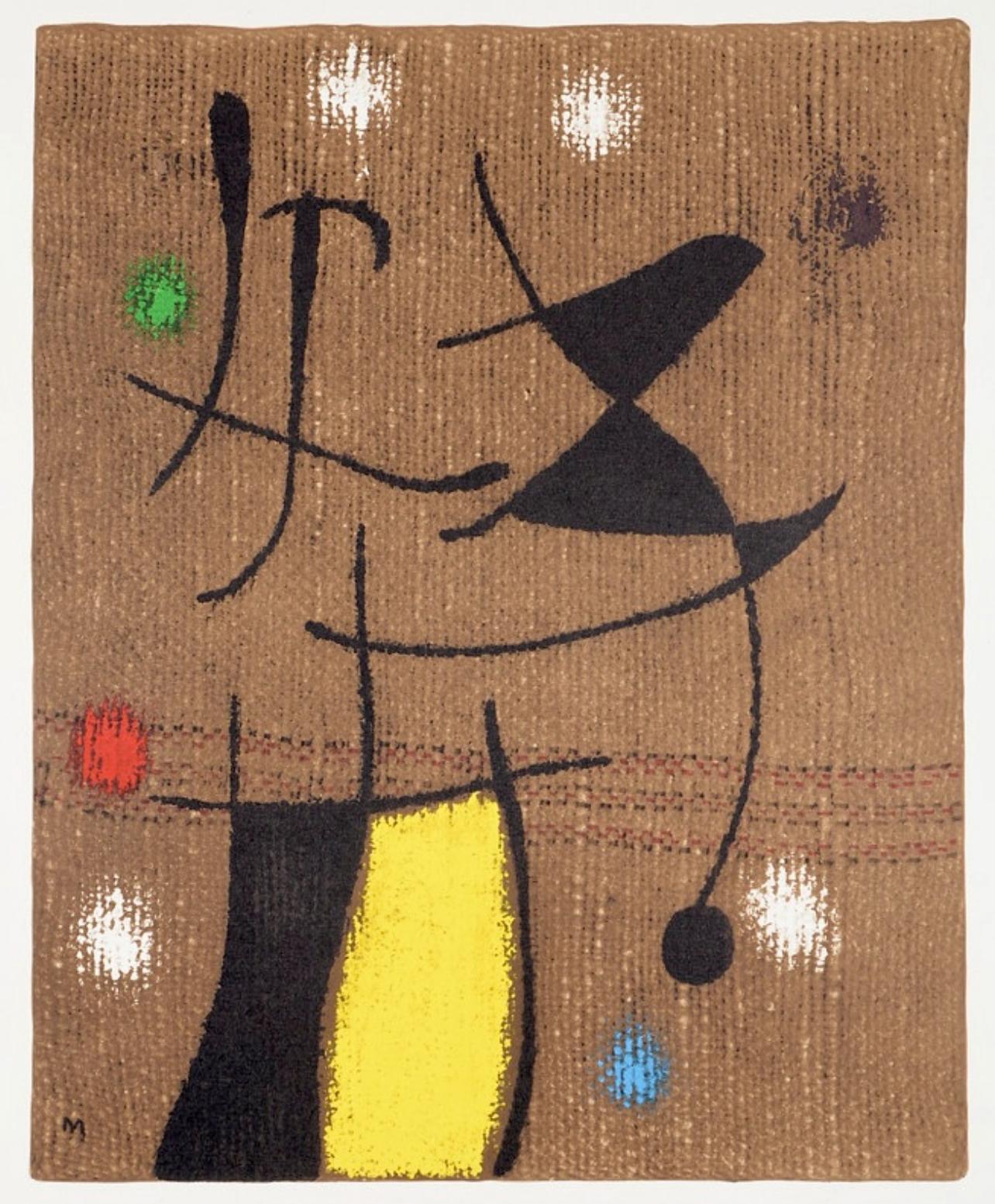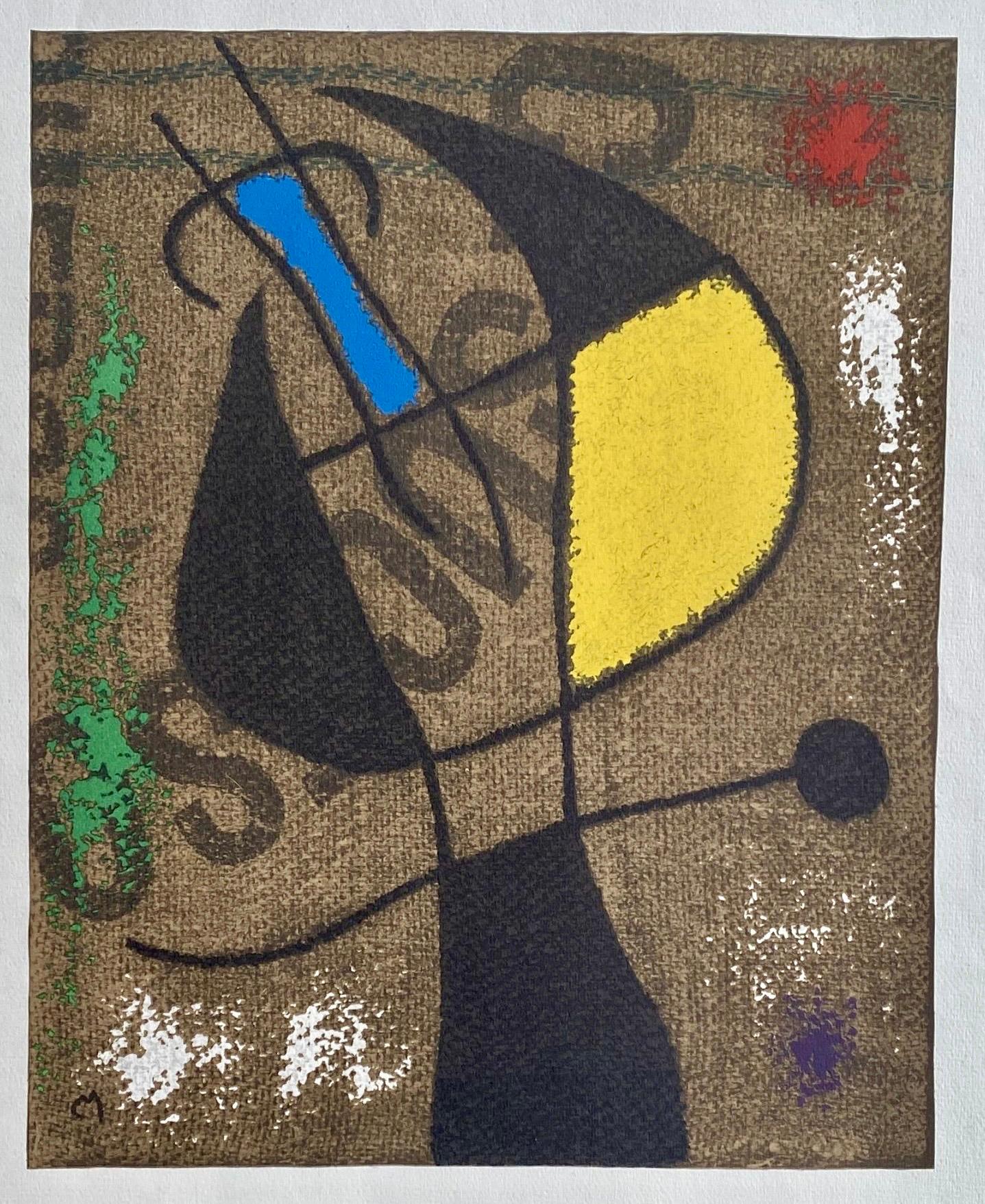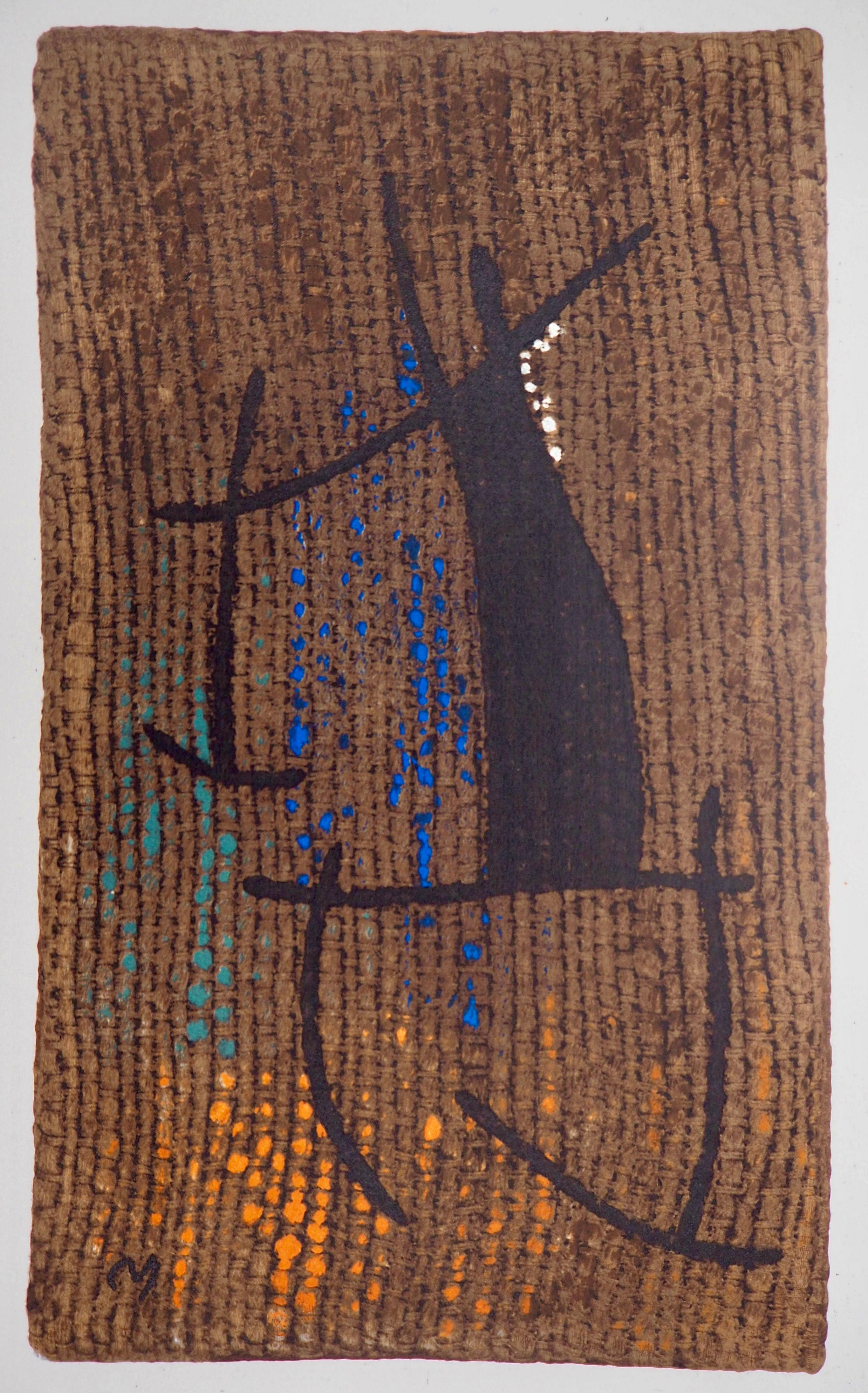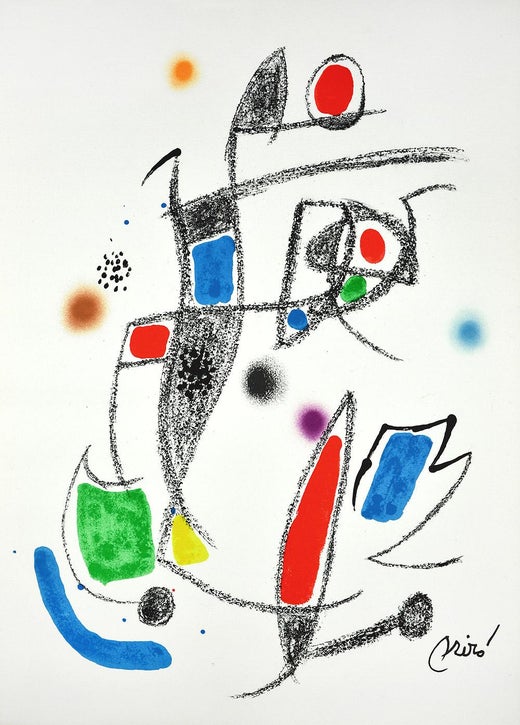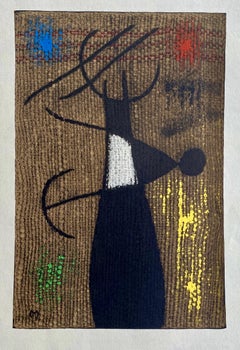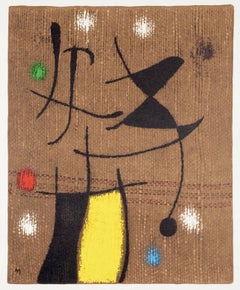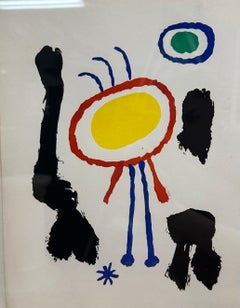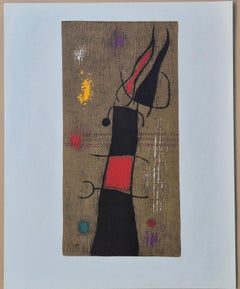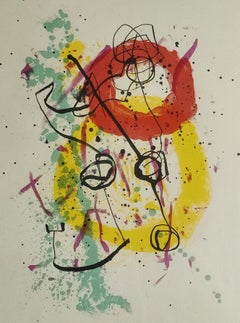This exquisite heliogravure by Joan Miro (1893–1983), titled Femme et Oiseau III/X (Woman and Bird III/X), from the folio Joan Miro, Femmes (Women), originates from the 1965 edition published and printed by Maeght Editeur, Paris, on November 27, 1965. The composition reflects Miro’s exploration of the feminine form in harmony with nature and the cosmos, where the recurring motif of the woman and the bird symbolizes creative energy, freedom, and the poetic union of earth and sky.
Executed as a heliogravure on velin d'Arches paper, this work measures 22 x 17.75 inches. Signed in the plate and unnumbered as issued. The edition exemplifies the masterful production of Maeght Editeur.
Artwork Details:
Artist: Joan Miro (1893–1983)
Title: Femme et Oiseau III/X (Woman and Bird III/X), from the folio Joan Miro, Femmes (Women)
Medium: Heliogravure on velin d'Arches paper
Dimensions: 22 x 17.75 inches (55.88 x 45.09 cm)
Inscription: Signed in the plate and unnumbered as issued
Date: 1965
Publisher: Maeght Editeur, Paris
Printer: Maeght Editeur, Paris
Catalogue Raisonne Reference:
Cramer, Patrick. Joan Miro: The Illustrated Books: Catalogue Raisonne. Geneva: Patrick Cramer, 1989, no. 105.
Condition: Well preserved, consistent with age and medium
Provenance: From the folio Joan Miro, Femmes (Women), published and printed by Maeght Editeur, Paris, November 27, 1965
Notes:
Excerpted from the folio (translated from French), From this album, which is the original edition of Claude Simon's text, it has been shot L head examples, numbered from l to L and X non-commercial examples, numbered from I to X, all signed by the painter and the writer. These examples include the print of Miro's original engraved woods for the frontispiece and the title and completed pages, as well as a unique print enhanced with colors by the artist of a composition made from 4 original engraved woods hand-drawn on velin d'Arches by P.A. Benoit. Finished printing on November 27, 1965 in the workshops of Maeght Editeur.
About the Publication:
Joan Miro, Femmes (Women) was published in 1965 by Maeght Editeur, Paris, as a poetic and visual collaboration between the artist and writer Claude Simon, recipient of the 1985 Nobel Prize in Literature. This remarkable livre d’artiste combined Simon’s lyrical text with Miro’s visionary interpretations of the feminine form, celebrating womanhood as a symbol of creation, fertility, and the interconnectedness of life and the cosmos. The volume was printed in the Maeght workshops using the heliogravure process, a technique that allowed for remarkable tonal depth and fidelity to Miro’s original designs. The edition included hand-engraved woods and color-enhanced compositions produced under Miro’s direct supervision, with a small number of deluxe copies signed by both the artist and the author. As with many publications by Maeght Editeur, Femmes exemplifies the house’s unparalleled commitment to uniting literature, visual art, and fine printing into a single work of art. The folio stands among the great collaborative artist’s books of the 20th century, reflecting both Miro’s mature aesthetic—his fusion of abstraction and symbolism—and the humanist spirit that defined Maeght’s vision of art as an instrument of beauty and renewal.
About the Artist:
Joan Miro (1893–1983) was a Catalan painter, sculptor, printmaker, and ceramicist whose visionary imagination and lyrical abstraction made him one of the most influential and beloved artists of the 20th century. Born in Barcelona, Miro drew inspiration from Catalan folk art, Romanesque frescoes, and the luminous landscapes of Mont-roig del Camp, developing a deep connection to nature that infused his work with vitality and symbolism. After formal training at the Escola d'Art in Barcelona, he absorbed the lessons of Post-Impressionism and Cubism before moving to Paris in the early 1920s, where he became a leading figure in the Surrealist movement. There, Miro forged a personal visual language of biomorphic shapes, floating symbols, and radiant color harmonies that reflected both spontaneity and spiritual depth. In creative dialogue with peers such as Alexander Calder, Alberto Giacometti, Salvador Dali, Wassily Kandinsky, Marcel Duchamp, and Man Ray, he helped revolutionize modern art by dissolving the boundaries between abstraction and dream imagery. Miro's inventive approach extended far beyond painting, embracing sculpture, ceramics, and monumental public commissions that redefined how art could interact with space and emotion. His expressive freedom and gestural abstraction profoundly influenced later artists including Jackson Pollock, Mark Rothko, Alexander Calder, Jean Dubuffet, Antoni Tapies, and Joan Mitchell, inspiring generations who sought to merge instinct, color, and imagination. Today, Miro's work remains a cornerstone of modernism, prized by collectors and celebrated in major museums worldwide. His highest auction record was achieved by Peinture (Etoile Bleue) (1927), which sold for £23,561,250 (approximately $37 million) at Sotheby's, London, on June 19, 2012.
Joan Miro Femme et Oiseau III/X Femmes (Women), Miro Maeght Editeur, Miro velin d'Arches, Miro heliogravure, Miro collectible print.
